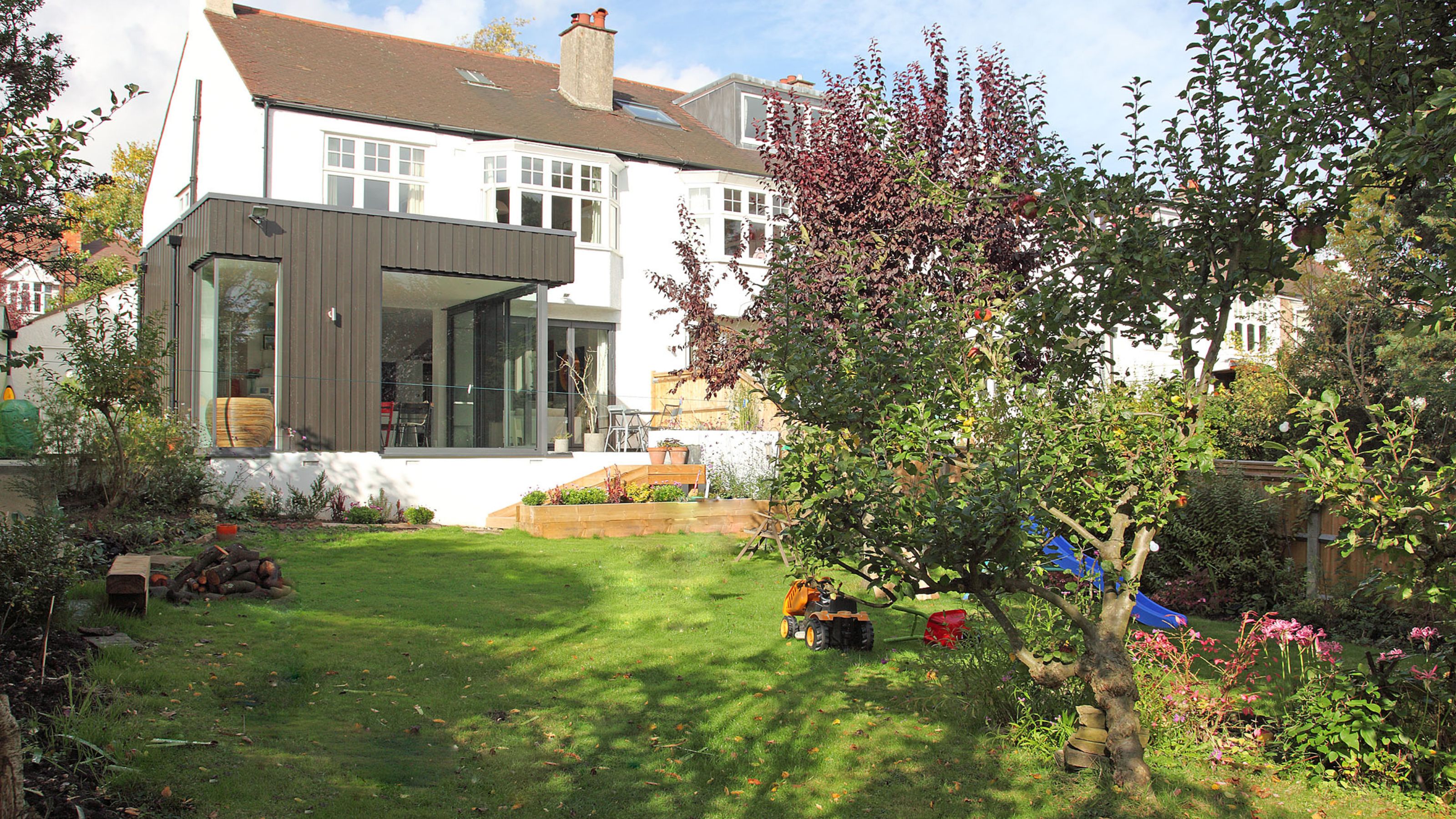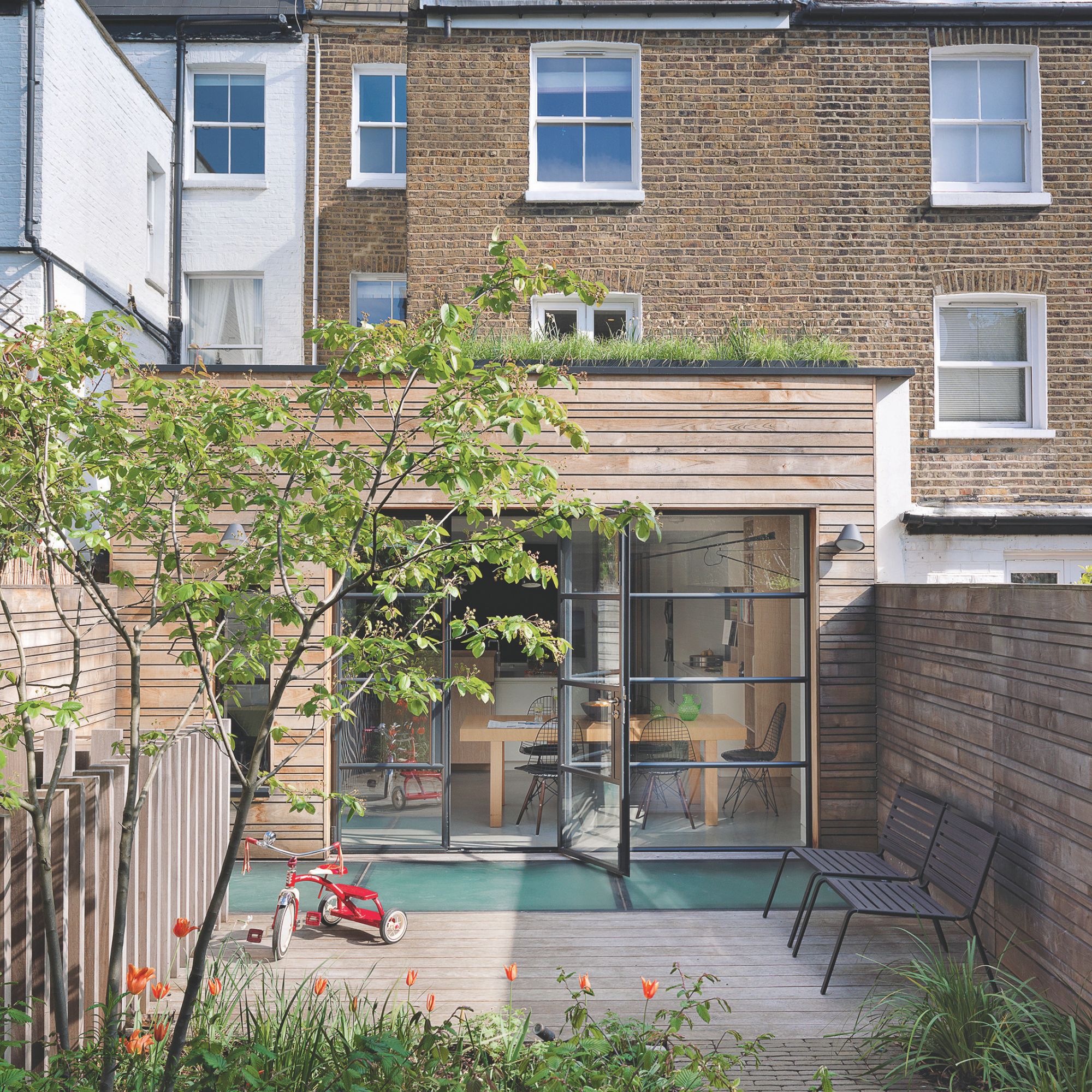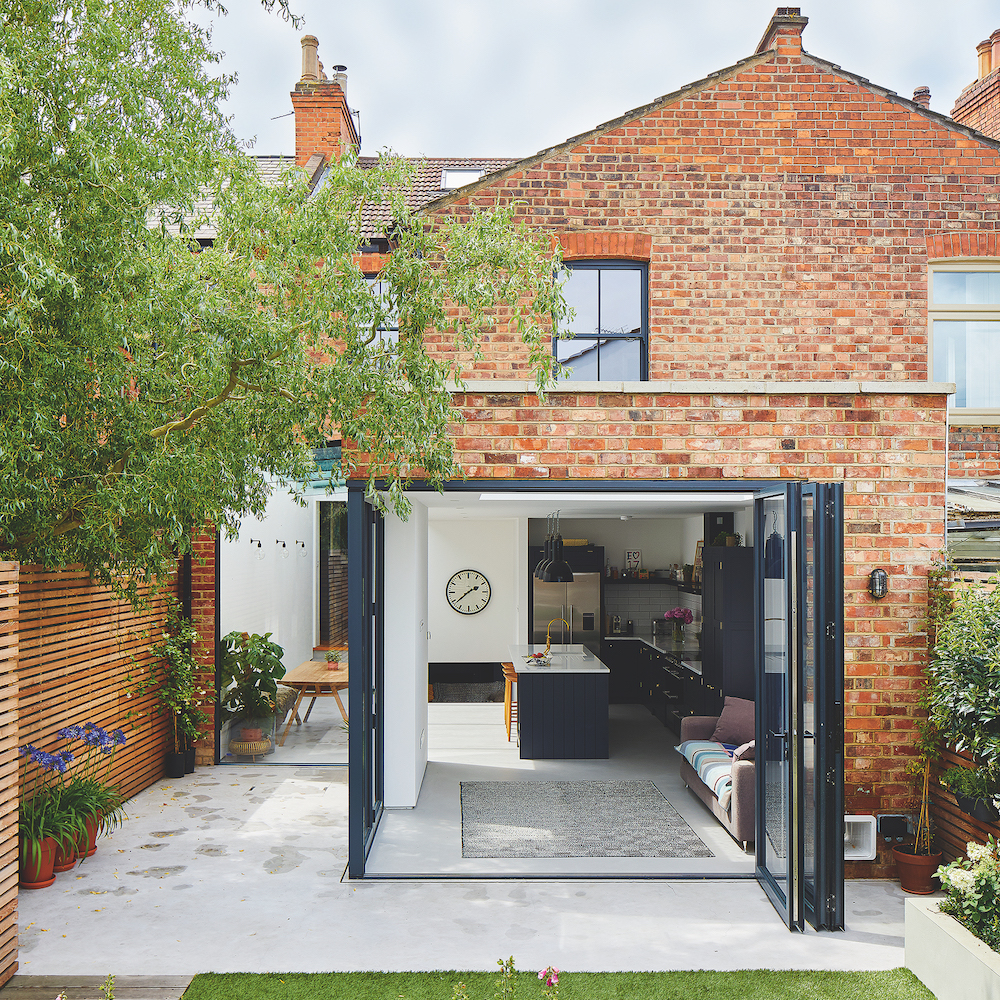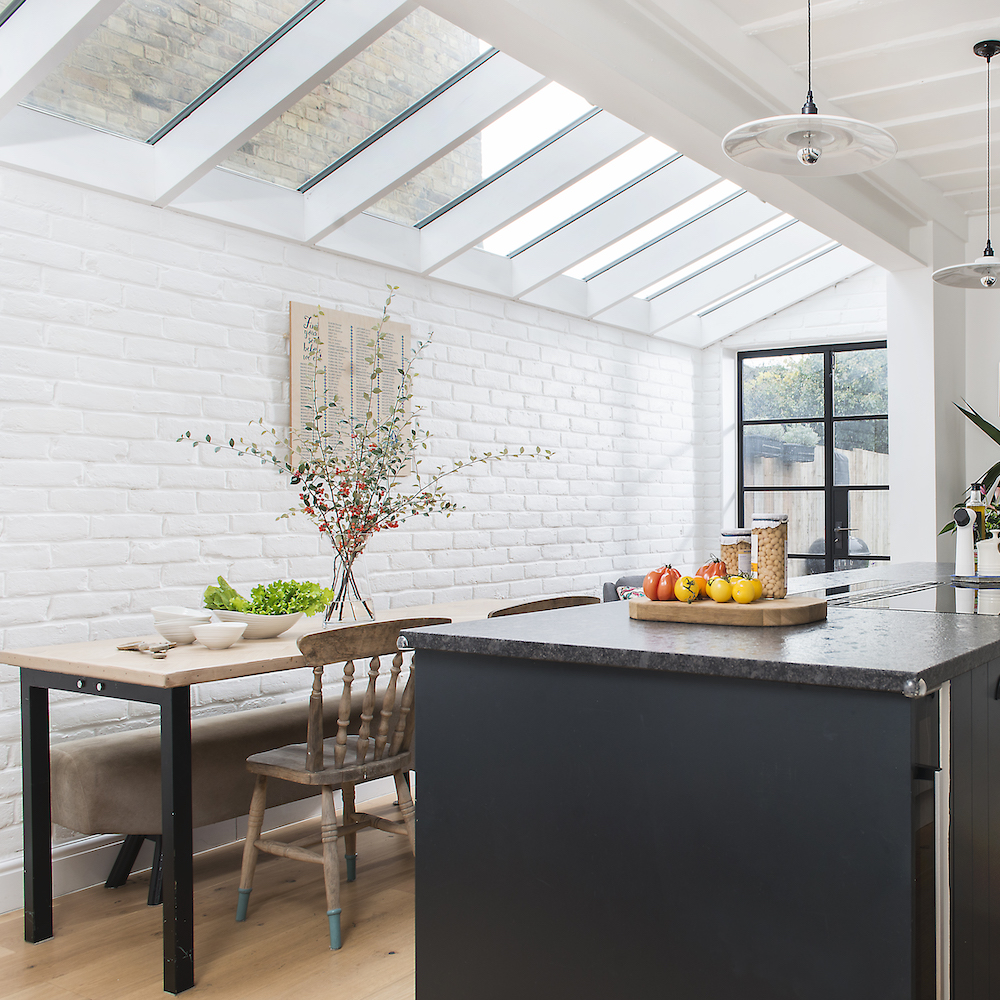What size extension can I build without planning permission? The rules you need to know
If you stick to the stringent criteria of Permitted Development, you can build an extension without planning permission


When you extend your home, there are lots of rules and regulations you need to adhere to, which can be daunting as a homeowner. But you might be able to eliminate some of the red tape by knowing what size extension you can build without planning permission.
The rules around planning permission for an extension can be complex, and depend on various factors like where you live and any previous work that has been done to your home. But in some cases, your proposed addition might be classed as Permitted Development (PD), which means you can avoid the planning permission process altogether.
If you're planning on building an extension, we've broken down the PD criteria as a guide to what size extension you could build, but always check with your local planning authority before you start building to make sure they apply to your specific project.
What size extension can I build without planning permission?

How big an extension you can build without needing planning permission will depend on how much space has previously been added to your home, where you want to put the extension, and where you live. Robert Quinton, director of Construction Megastore, says: 'For example, the extension must not use more than half the surrounding land, exceed certain height limits, or include features like verandas or chimneys. Homes in conservation areas, listed buildings, or properties that have been extended since 1948 also might not qualify.'
PD rules are strict and can be complicated so it can help to choose an architect that is familiar with local planning policy to help bring your extension ideas to life. You could also work with a planning consultant to make sure your scheme follows the criteria.
Even if you don't need planning permission for your project, you will need to meet the requirements of building regulations for extensions to make sure it's built correctly.
Here are the rules you need to know:
Get the Ideal Home Newsletter
Sign up to our newsletter for style and decor inspiration, house makeovers, project advice and more.
1. Single-storey rear extensions
At the back of your house, you can add a single-storey extension under Permitted Development, as long as it…
- Doesn’t exceed 4m (for detached properties) from the original back wall (or 3m if your property is not detached). Recent changes to PD rights mean you can now build a rear extension by up to 8m (for detached houses) and by 6m (if not detached) with prior approval under the neighbour consultation scheme;
- Is less than 4m in height;
- Is no more than half the width of the original house;
- In Northern Ireland, a single storey rear extension should be within 3.5m of the rear boundary if the house backs onto a road.

2. Two-storey rear extensions
You can build a two-storey extension at the back of your house without planning permission, provided you meet the PD criteria.
- It can’t go more than 3m beyond the rear wall of the existing house;
- It must be a minimum of 7m away from any boundary opposite the rear wall of the house (10m in Scotland and 10.5m in Wales);
- It has to be less than 4m high;
- Materials used on the exterior should be similar to those on the existing house;
- Eaves and ridge height should be no higher than the original property (eaves should be no higher than 3m if within 2m of a boundary);
- Roof pitch should match the existing house where it is possible;
- Any windows on the side elevation of the rear extension must use obscured glass, and be fixed, unless the opening is more than 1.7m high from the floor of the room it's in;
- Can't be located in a designated area, such as an Conservation Area, Area of Outstanding Natural Beauty or a National Park.
If you want to add a second storey to an existing single-storey extension, this won’t be possible under Permitted Development Rights if the existing addition extends beyond the rear wall by more than 3m, instead you'll have to look into acquiring planning permission for an extension.
3. Side extensions
You can build a side extension without planning permission, but only if it is
- Single storey and less than 4m in height (less than 3m if it is within 2m of a boundary;
- Not built between the property and a highway;
- No more than half the width of the original house (at its widest point).
A side extension would need planning permission if it extends beyond the side wall and is more than half the width of the house.
There are different rules about side extensions in Wales – for example, two-storey structures are possible under Permitted Development. Check with your local authority or architect if you are unsure.

4. Rear and side extensions

Tread carefully in cases where both the rear and side wall will be pushed out, as the restrictions on both apply here – and it can get complicated! In order to qualify as PD, your extension must…
- Extend no more than 6m beyond the rear wall (or 8m for a detached house);
- Be one storey, not more than 4m high (or no more than 3m if within 2m of a boundary)
- Have a total width that’s not more than half the width of the house.
This makes side return extensions, where you’re filling a space between the rear and side wall to square off the footprint, doable under PD. Two separate extensions are also possible but connected, wraparound extensions will exceed the width restriction and require planning permission (unless you’re in Wales, where the ‘half the width’ rule does not apply).
How high can I build an extension without planning permission?
There are rules under Permitted Development when it comes to the height and roof of an extension.
When you extend your home the extension can't be taller than the tallest part of the original building. The roof pitch of a two-storey extension should be the same as the pitch on the original roof, as far as is practical, too.
The height of the eaves needs to meet certain criteria as well. The Permitted Development guidelines say: 'For the purpose of measuring height, the eaves of a house are the point where the lowest point of a roof slope, or a flat roof, meets the outside wall.'
FAQs
When does an extension require planning permission?
If you want to build something outside of the scope of Permitted Development, then you will need to submit a planning application.
Similarly, if you live in a designated area or a listed building, it's highly likely that your Permitted Development rights will be restricted or removed completely, which means you would need to apply for planning permission to build an extension, even if you wouldn't have to if you lived elsewhere.
PD rights are based on the property as it stood on 1 July 1948 (or as it was originally built, if it was built after July 1948). If you're home has been extended in the past, even by previous owners, you may also find that you've used up your Permitted Development rights, which again means you'd need to apply for planning approval if you wanted to add more space.
Even though we've said this before, always double check whether your extension can be built under PD before you start. Once built, if it turns out you actually needed planning approval, you may be able to apply for retrospective planning permission. But there is no guarantee that this will be granted, and you may end up with a fine or having to demolish what you've built.
If the planning rules are making your project unviable, then you could weight up an extension vs a loft conversion to see if there is an alternative way to get the additional space you need.

Sarah Handley has been Ideal Home’s Section Editor for Renovation since September 2024, following three years of looking after the site's home finance content. She has been a journalist since 2007 and has worked for a range of titles including Homebuilding & Renovating, Real Homes, GoodtoKnow, The Money Edit and more.
You must confirm your public display name before commenting
Please logout and then login again, you will then be prompted to enter your display name.
-
 This £200 limited-time discount makes this Dyson vacuum cheaper than I’ve ever seen it - run don’t walk to Argos for this bargain
This £200 limited-time discount makes this Dyson vacuum cheaper than I’ve ever seen it - run don’t walk to Argos for this bargainIt's the most affordable Dyson on the market right now
By Lauren Bradbury
-
 Martin and Shirlie Kemp’s pastel flower beds has given their Victorian renovation a romantic look - how you can get the look
Martin and Shirlie Kemp’s pastel flower beds has given their Victorian renovation a romantic look - how you can get the lookTheir pastel garden is the cottage garden inspo you've been looking for
By Kezia Reynolds
-
 7 outdated rules to ignore when designing a small patio – experts say ditching them will transform your space
7 outdated rules to ignore when designing a small patio – experts say ditching them will transform your spaceThese are the traditional patio design rules you don’t always need to follow
By Rebecca Lawton